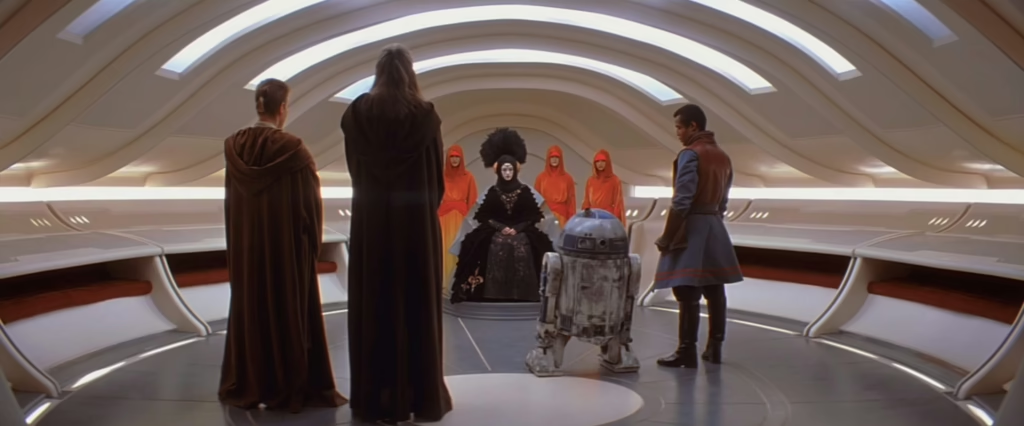George Lucas | 2hr 16min
This review was requested by Chase, who shared the following thoughts:
“I’m happy to support your site and excited to see your thoughts on the prequels, keep up the great work Declan ❤️“

It had been 22 years since George Lucas last sat in the director’s chair when he embarked on the Star Wars prequel trilogy, yet his vision for this far, far away galaxy remained as ambitious as ever. Luke Skywalker’s journey from farm boy to Jedi Knight was only part of that epic mythos, teasing historic tales of a once-noble Galactic Republic, the monastic order which protected it, and its tragic fall into corruption. As such, the stakes for The Phantom Menace were high in 1999, promising to expand the narrative foundations of the saga and usher in a new era of science-fiction spectacle. For long-term Star Wars fans, it was to be the return of a long-awaited legend – or, in the eyes many, the Chosen One.
As it turns out, The Phantom Menace wasn’t the universally beloved origin story that many were hoping for. Lucas’ creative instincts had shifted since the 1970s in major ways, targeting more juvenile audiences with misplaced comic relief, and writing mechanical dialogue that is only amplified by wooden performances. Perhaps the biggest transformation though is in his embrace of cutting-edge, digital technology, superseding the handcrafted models and puppetry which once defined the original trilogy’s analogue charm. The results do not come without flaws, exposing the limitations of the era’s computer-generated imagery in rendering realistic tactility, organic motion, and physical weight – yet to dwell solely on these imperfections is to miss the span of Lucas’ visionary reach. The Phantom Menace is a bold, unpolished prototype of Star Wars’ evolution in years to come, bridging the old legends of heroic folklore with an uninhibited zeal for cinematic reinvention.

Not that the opening crawl of exposition does much to prepare us for this daring aspiration, clumsily setting the scene of tax disputes that have spurred on the Trade Federation’s blockade of the pastoral planet Naboo. It is a trivial, bureaucratic matter for Jedi Master Qui-Gon Jinn and his apprentice Obi-Wan Kenobi to resolve, yet one which rapidly spirals out of control when the Viceroy unleashes his battle droids, forcing them to retreat to the forests below. Only when Gungan outcast Jar Jar Binks leads them to the secluded, underwater city of Otoh Gunga does Lucas truly begin to show the potential of his digital wizardry, suspending dozens of large bubbles in submerged darkness, and shedding a warm, bioluminescent glow from each. Even the harshest of critics would struggle to protest the beauty of this setting, and from there, The Phantom Menace’s visual wonder continues to bloom into view.
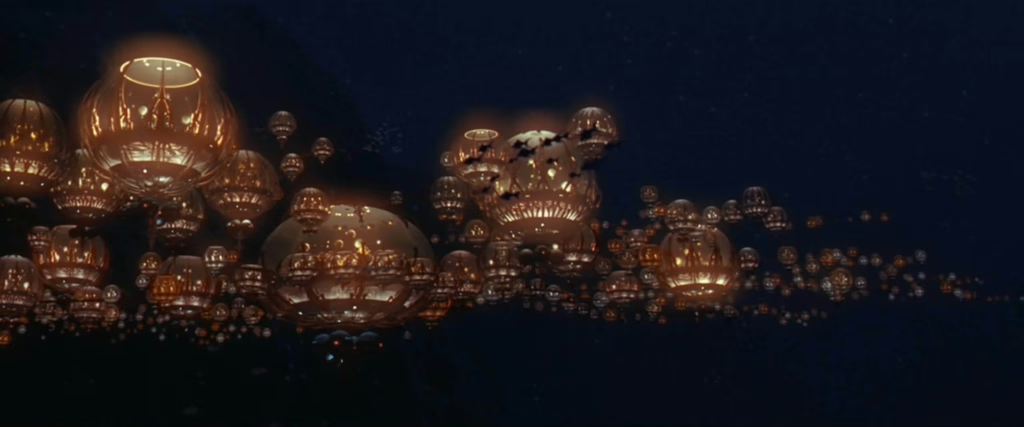
It is fair to say that Lucas’ work here is an ancestor to those CGI-dominant films that would later take over Hollywood, positioning the technology as both a blessing and a curse. Just as it lays the misguided groundwork for Cats, so too does it pave the way for James Cameron’s astounding worldbuilding in Avatar, as well as the hyperkinetic experimentation of Speed Racer. Especially once we arrive on the city planet Coruscant, home to the Republic’s seat of government and the Jedi Order’s headquarters, we see Lucas massively expand the scope of the frame beyond anything from the original Star Wars trilogy. This is not to say it eclipses the careful visual design of the Death Star or the Mos Eisley cantina, but the compositions of floating platforms that spiral through the Senate’s vast, dark amphitheatre conjure a grand scale only achievable through special effects. Similarly, the exterior views of metallic skyscrapers and burnt-orange sunsets paint handsome cityscapes of a sprawling metropolis, both imposingly majestic and detached from the people it governs.



Still, it isn’t unusual for Lucas to get distracted by his own spectacle here, particularly during Qui-Gon and Obi-Wan’s lengthy stopover on the desert planet, Tatooine. Seeking to escort Queen Amidala to Coruscant yet stranded without a crucial part for their ship, they meet young slave Anakin Skywalker, whose innocent bond with the Queen’s supposed handmaiden Padmé sets the stage for a war that will reverberate across generations. For now though, podracing dominates Lucas’ attention – necessarily setting up Anakin’s early sensitivity to the Force and piloting ability, yet not quite justifying the amount of time spent dwelling in its adrenaline-fuelled tournament and Jake Lloyd’s stilted performance.

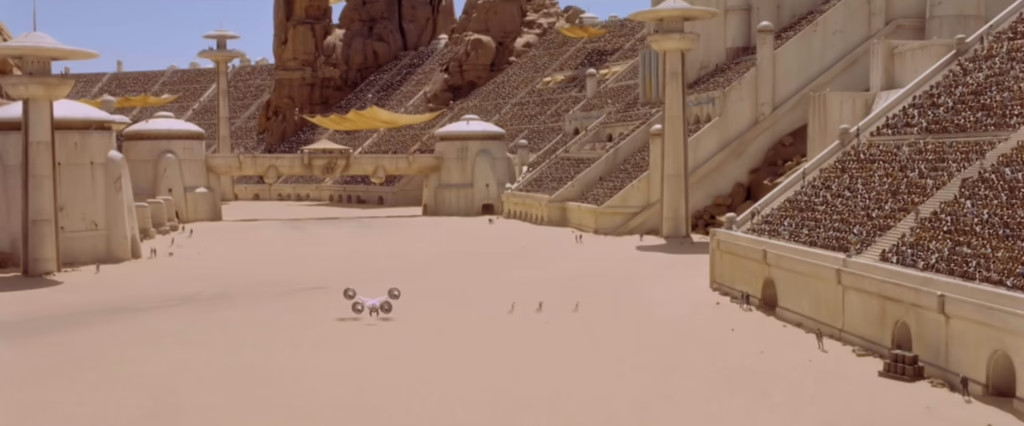
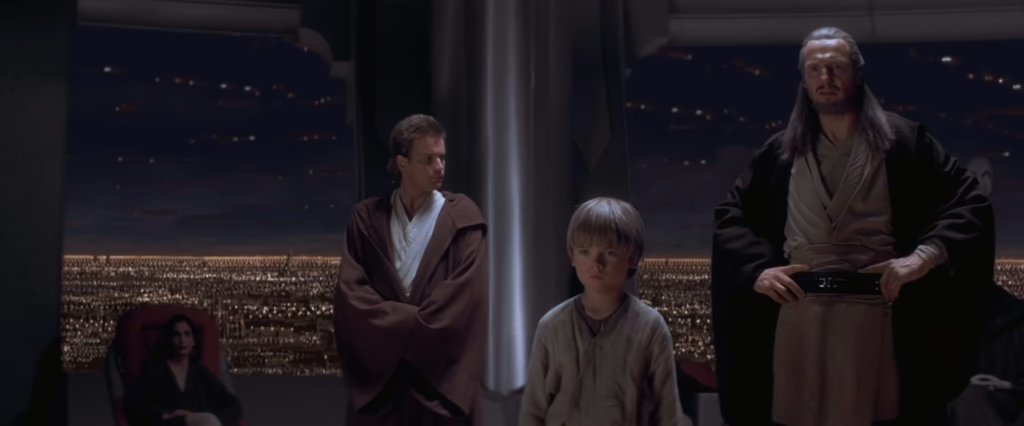
Needless to say, Lucas’ aesthetic artistry is rarely compromised when his practical sets and effects are at the centre. Italy’s Royal Palace of Caserta is resourcefully used for the Theed Royal Palace, its reflective marble floors, ornate columns, and vaulted ceilings lending an air of regal authenticity, while the circular symmetry of the Jedi Council Chamber distinctly reinforces the order’s structured, balanced philosophy. In terms of character though, it is Darth Maul’s demonic visage which distils Lucas’ flair for visual storytelling into a single, menacing figure, surpassing any digital creation with his face tattoos and horns. While Darth Sidious’ face is often hidden, Maul’s becomes the living emblem of the Sith’s resurgence, further embodied through actor Ray Park’s martial arts prowess that brings a lethal grace to his lightsaber duels – and inadvertently exposes the weightless, off-kilter physics of Lucas’ digital choreography used elsewhere.
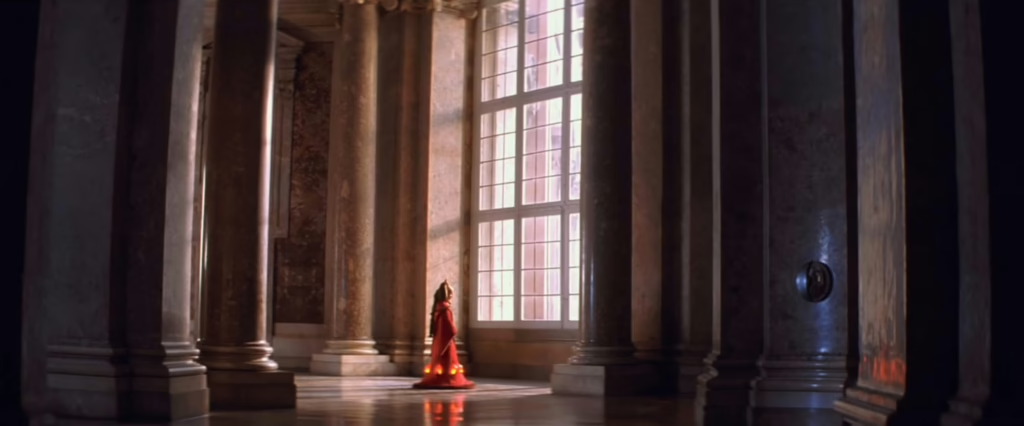


It is no easy feat convincingly blending live-action and CGI after all, and The Phantom Menace often falters in this arena, floating characters over green screen backdrops with mismatched lighting and flat textures. Jar Jar may be the worst offender here with his rubbery, cartoonish animation, gratingly exacerbated by his squeaky baby talk and bumbling slapstick. His continued presence throughout the Battle of Naboo actively undermines its high-stakes confrontation between the Gungans and the Trade Federation, and while Anakin’s concurrent skirmish aboard a starfighter doesn’t quite land either, Lucas fortunately regains his footing in the cumulative momentum of his multi-threaded climax.
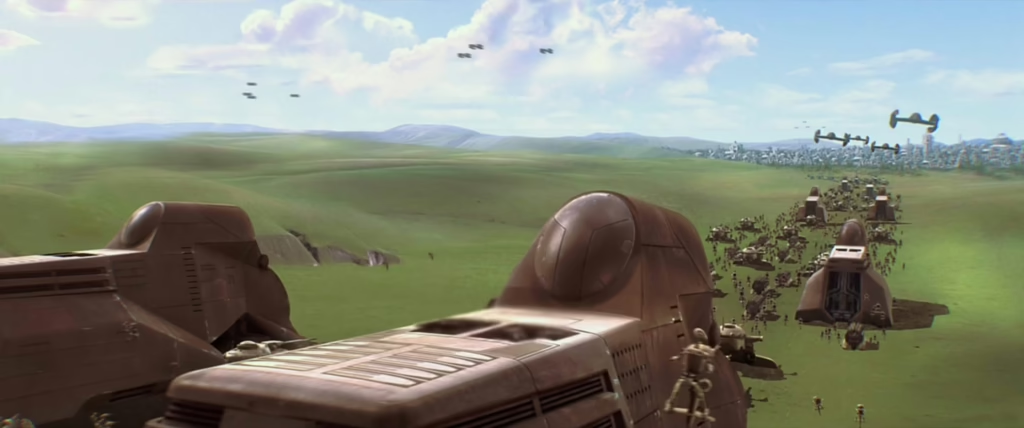
Woven in with these battles, Lucas’ parallel editing also neatly traces the infiltration of the Theed Royal Palace, led by Padmé – now revealed to be the true Queen Amidala. The Trade Federation’s occupation of Naboo threatens her people’s sovereignty, thus giving her the chance to demonstrate her tactical brilliance, though Maul’s emergence overshadows it all with a surge of primordial malevolence. Deep within the heart of the palace’s power generator, he engages Qui-Gon and Obi-Wan in the film’s most compelling lightsaber duel, precariously unfolding above industrial shafts, across narrow catwalks, and through force-field barriers that snap open and shut like clockwork. It is tough to imagine how Lucas might have fared without the return of John Williams’ musical genius to the franchise, and here especially, the choral urgency and operatic scale of ‘Duel of the Fates’ lends a tragical inevitability to Qui-Gon’s slaughter at the hands of Maul.

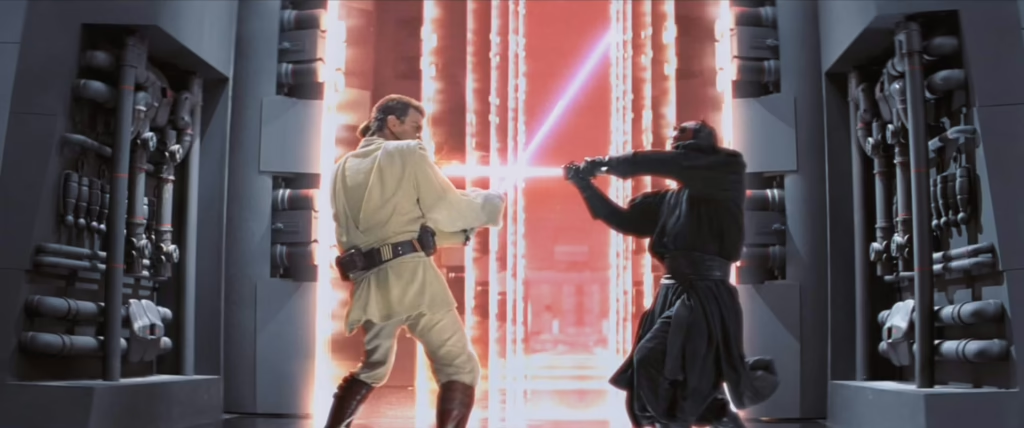
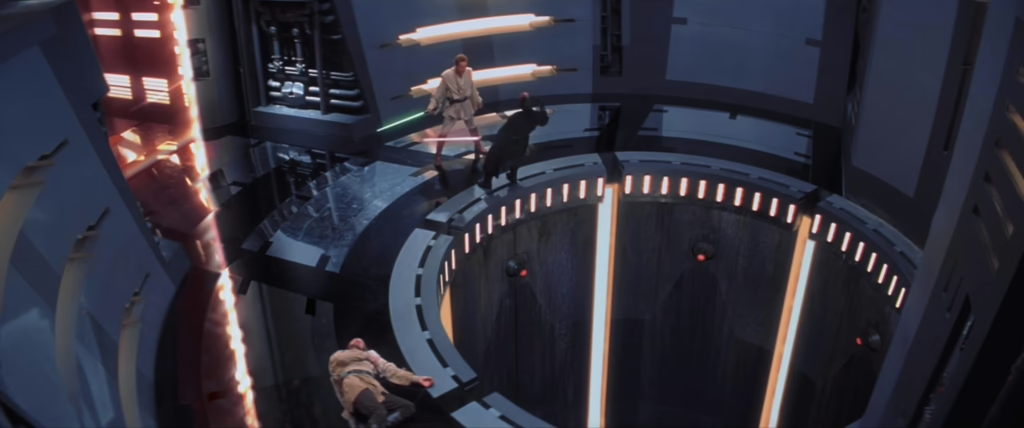
If there is any thematic throughline in the Star Wars franchise, perhaps it is the generational handover of Jedi wisdom from one generation to the next, maintaining balance between light and dark. By defeating Maul, Obi-Wan simultaneously avenges his Master and proves himself worthy of taking up his mantle, thereby earning the right to train Anakin in the ways of the Jedi. Nevertheless, doubts are already cast that this messianic child prodigy born of immaculate conception is truly destined to restore balance to the Force, sowing the seeds of both personal and political ruin. Lucas’ myth-making ambitions are undoubtedly bold, and although The Phantom Menace serves as an uneven foundation to the darker chapters ahead, it dares to enrich the saga’s philosophical dimensions through the sinister inception of its most tragic, fateful transformation.
Star Wars: Episode I – The Phantom Menace is currently streaming on Disney+, and is available to buy on Apple TV, YouTube, and Amazon Video.
Have a film you’d like me to write about next? Request a review here.
